
Last year I reviewed a book for this site called The Not So Secret Life of Nimh, a book about a dumbo rat and rat care. Long ago, in a universe somewhat parallel to this one, the author sent me another book to review about a cat who enjoys art and experiences it in a unique way. This was a digital copy, which I saved to my computer and backed up onto a memory stick. Shortly afterward my computer died, as did its replacement. It has taken me until now to get things together, but I can finally review this cute little story of Gatsby the cat for you.

Cover for Gatsby’s Grand Adventures, Book 1. Story by Barbara Cairns, Illustrated by Eugene Ruble. Cover art by Eugene Ruble
There is magic in these pages, much like the magic of Blues Clues, the television show from Nick Junior, where Blue the dog and a human friend (either Steve or Joe) “skidoo” into a picture on the wall. In that new place they have traveled to, they are able to interact with the image, usually by talking to characters within the picture. Gatsby the cat has a similar power: his tail twitches, his nose itches and his haunches hitch before he leaps into a painting that is part of the art gallery he lives in. Each book is about a different painting. This first installment focuses on Winslow Homer’s “Snap the Whip.”
Gatsby loves art and loves to jump in paintings. The story itself is cute, though there isn’t much purpose in it other than to teach the reader a little about the painting itself. Reading about Gatsby’s adventure, you can discover a few things about this particular work of art:
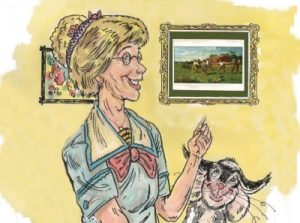
“My Winslow Homer painting is magically restored.” Final image in Gatsby’s Grand Adventures, Book 1. Illustration by Eugene Ruble, used with author’s permission.
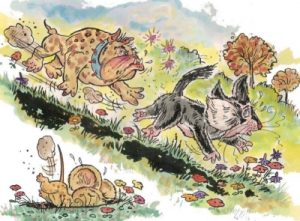
“A huge dog bounded down the hill. The mouse darted into a hole.” Some of the imaginary action in the painting as described above. Illustration by Eugene Ruble, used with the author’s permission.
Now, I know this isn’t a site specifically dedicated to art and literature, so I want to spend a little time on the animals themselves. There isn’t too much to discuss in this department though, the dog chases the cat, and the cat chases the mouse. Both of these things are what you would expect in a short adventure picture book for young children. They provide speed to the storytelling and a purpose for the necessity of the cat’s return to the paintings each night, but there is little else here that is specific to these animals. I wasn’t really expecting anything else in an adventure story book, but I was surprised to discover that there was some animal behavior contained in the pages as I read through.
You do see some very small examples of cat behavior and body language, which I thought was a nice touch, but there were other things that could have been discussed that I felt were pushed aside. At one point one of the boys bothers Gatsby and pulls his tail. This was an excellent educational opportunity to show children the emotions of an animal that feels threatened or hurt by a human’s actions. Though the words read, “Gatsby pulled away. His whiskers flattened against his cheeks. His ears drew back.” nothing else is really said about the incident. The cat is afraid of being squashed, so he jumps away from them and out of the painting. I would love to have a more thought provoking reaction from the cat, who is a thinking entity within the story. If he has the opportunity to think that he will correct his mistakes, then he should have had the opportunity to reflect some on the pain or fear he felt when being bothered by the boys and associate those feelings with his physical reactions. Moments like that would maximize animal behavior and feelings relating to each other. This isn’t an animal behavior book, though, so having a mention at all gets a lot of extra points in my book.
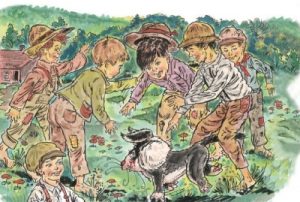
“The biggest boy chased Gatsby and grabbed his tail.” Illustration by Eugene Ruble, used with the author’s permission.
Overall this is a cute story, with a quick running plot and some interesting ideas. It has colorful illustrations that can be busy, but not in a distracting or unpleasant way, and the story teaches some things about art and animal behavior. I think young readers will find his book educational and entertaining, but I think that to get the most out of it, a child should have an adult discuss the story with them as they read and after they have finished. There are many links provided on the back pages for further study of the painting which can help with your discussions and include “Snap the Whip” in some other aspects of your child’s life as both a piece of art and a part of history.
Story by Barbara Cairns
Illustrated by Eugene Ruble
Genre & Topics: Fiction, Art, Cats
Published in 2012 by Guardian Angel Publishing
16 pages, illustrated with drawn artwork
This book was a gift from the author in exchange for an honest review.

Mirrani Houpe, our Small Animal Editor, has had rats since she took home her first little boy once they both completed the second grade. Since that time she has owned, rescued and bred many kinds of rats, from many backgrounds. She may not be a vet, psychology major, or scientist, but her babies have her very well trained when it comes to how to care for them. She is constantly working with her family’s veterinarian to come up with new and innovative ways to love and care for the most often misunderstood rodent in the pet world. You can e-mail her at mirrani@yourpetspace.info

I had neighbors who had ferrets growing up and I never wanted to own one because they were stinky. This was my first misconception about ferrets. We got our first ferret, Loki, a little more than a year and a half ago and I fell in love instantly. He was so cute, loving, and not stinky at all. As soon as we got him I began researching everything that I could about ferrets and one thing I came across, where I believe a lot of first time ferret owners make their mistake, is that bathing too often actually makes ferrets stink more. They only need to bathed once a month at the most. Bathing them more frequently strips away the oils in their skin and they produce more to compensate, and it’s these excess oils that smell. Another cause of the stink is having an intact male, but generally you will not come across an intact ferret in the United States, and I believe de-sexing a ferret is required before they can be sold in a pet store. Don’t get me wrong, ferrets still have a very distinct musky smell, but a healthy, de-sexed ferret does not smell any more than a dog or cat. They may even smell less in my opinion, and I have actually come to like the smell of ferrets. You definitely get used to it.
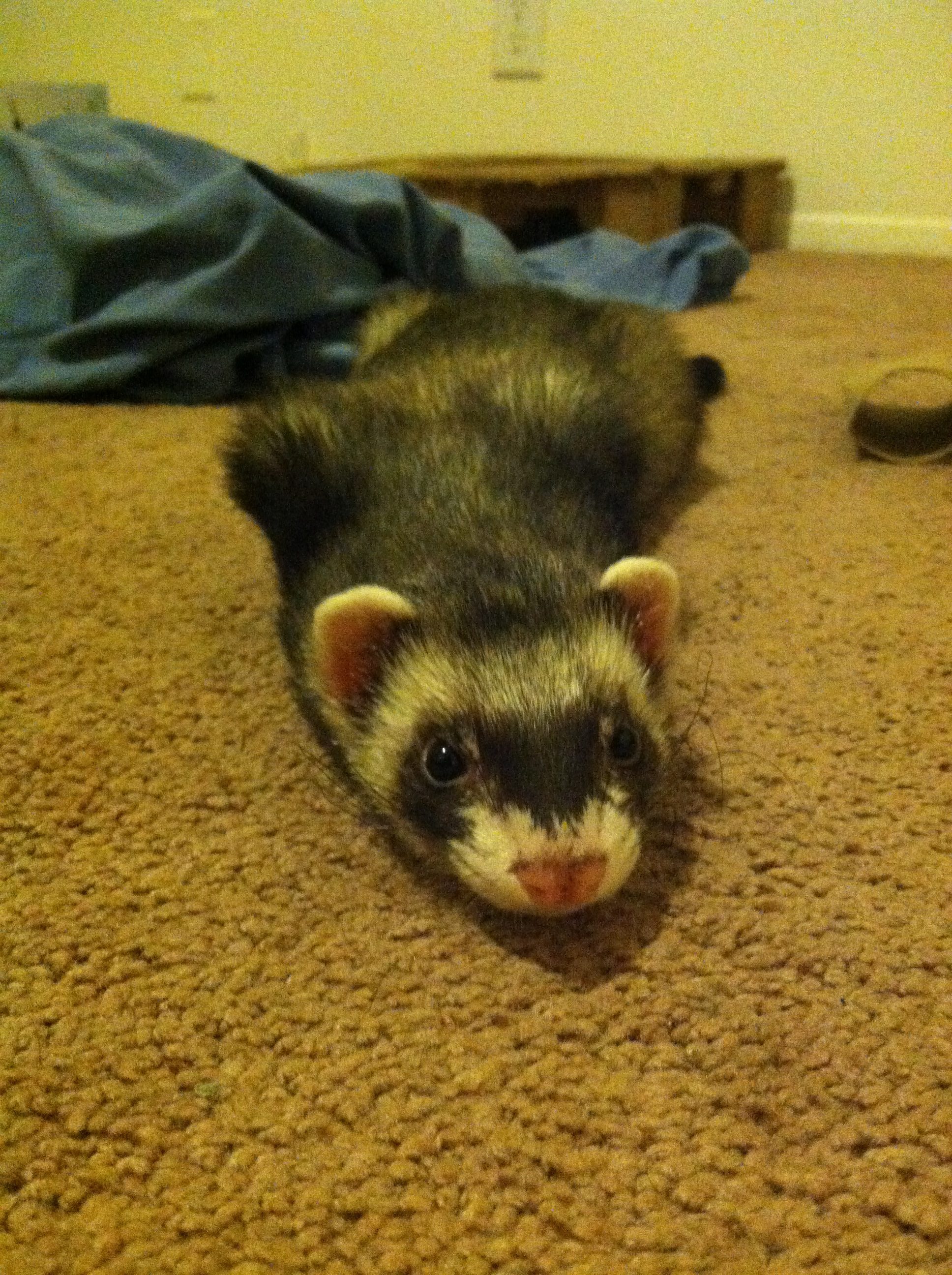
About four months after we got Loki we adopted Thor. From what we know, someone got him as a gift for someone and they did not want him so they surrendered him to Petco. When we brought him home, within five minutes he had explosive diarrhea. Ferrets have very sensitive digestive tracts and stress can cause diarrhea, but this was something much worse. After taking him to the vet we discovered he had an intestinal infection and he was on antibiotics for 10 days.
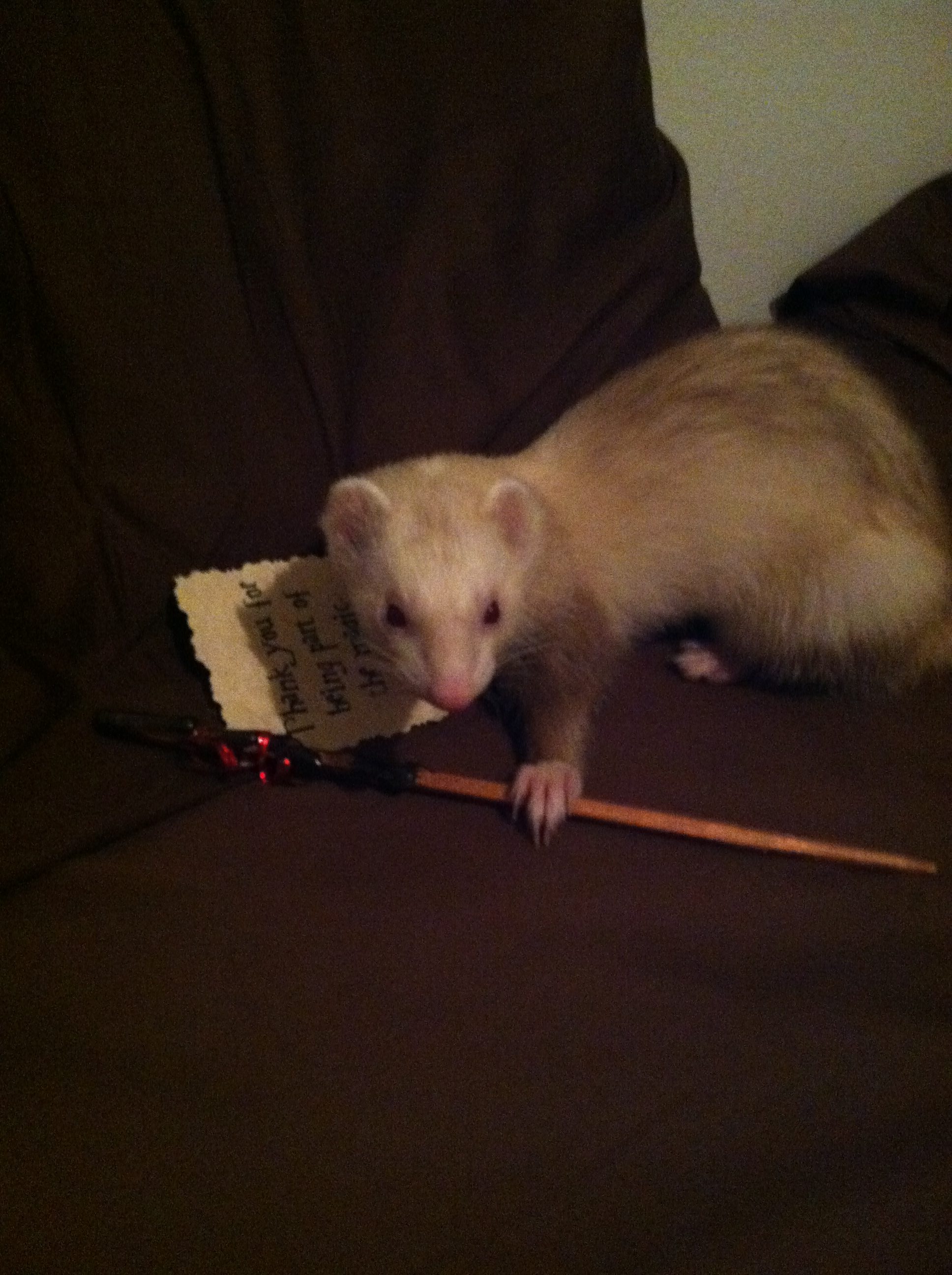
After adopting Thor, I really began looking at the food I was feeding my ferrets. As sensitive as their digestive tracts are, Thor’s is much more so. Ferret food should have high protein (at least 35%), high fat (at least 15%), and low fiber (no more than 3%). It is also best for their main source of food to be low in moisture. Dry food is better for the health of their teeth. You should also read the actual ingredients. The more meat based ingredients in the first five, the better quality the food is. What I like to look for in food as well, mainly because of Thor’s digestive issues, is some kind of probiotics, such as lactobacillus acidiphilus (the bacteria found in yogurt). It is the same logic behind eating yogurt; they help the good bacteria population in the intestines to help digest food. You will also want as little carbohydrates (sugar) as possible in your ferret food. Too much sugar in the diet may lead to insulinomas, or cancer of the insulin producing cells of the pancreas. This is based on what I have read online from many different sources over the last two years and I am in no way a veterinarian or an expert in these matters, so I urge you to talk to your vet about such things before changing anything you do with your ferret, especially changing their diet. Not only did they go to school for many years to do their job, but they know your individual ferrets’ health better than anyone.
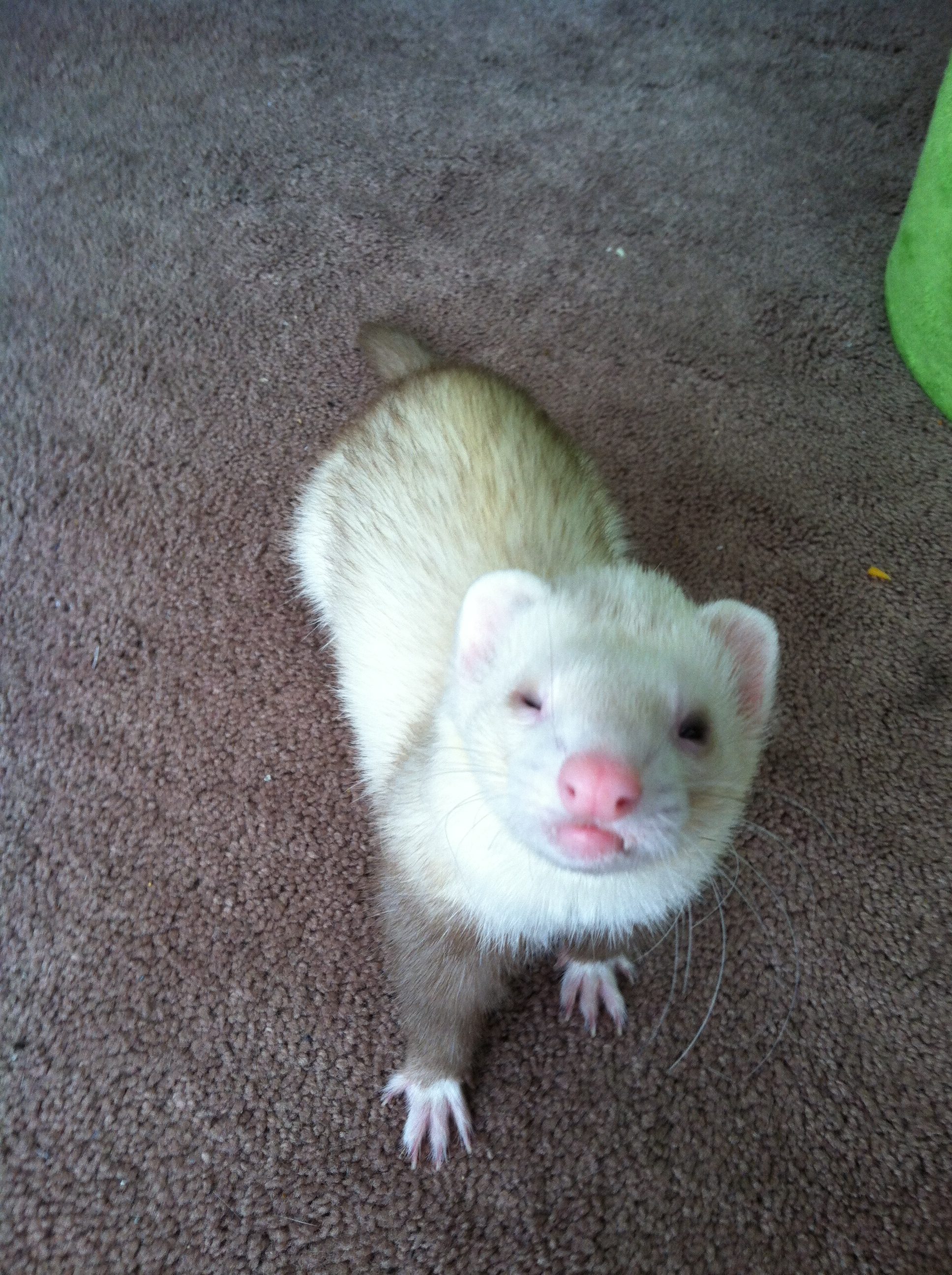
One of the most important pieces of advice I can give about food is this: make sure you are feeding at least two different foods to your ferret(s). This is for a couple of reasons, but most importantly it is so your ferret will be used to more than one type or brand of food just in case you run out of one type and do not have the means to replace it right away or the company decides to discontinue the food you are currently feeding. I recently ran into this problem. When I first got both of my ferrets they were eating Marshall’s Ferret Food (what they usually feed them at pet stores). Once we adopted Thor I switched them to 8 in 1 Ultimate Crunchy Diet food. IMPORTANT ADVICE: when you switch your ferret onto a new food, or just add new food, you must do so slowly, over a period of at least two weeks. You should mix a small amount of the new food in with the old food and gradually increase the new food to allow your ferrets’ sensitive digestive tract to adjust. If you switch or add a new food too quickly your ferret may get diarrhea.
In the case of Thor, I once fed them a new duck soup one night and it was too much too soon, which actually resulted in a bit of bloody diarrhea. More recently, I had been reading about having more than one ferret food as part of their diet and I was actually in the process of researching new food to add when I tried to order more of the 8 in 1 I discovered it was out of stock on Amazon. I went to the one pet store in town that I knew still sold it. They were out and said they were not going to be receiving any more of that food. When looking online I discovered that this company was discontinuing that particular food. I was panicking a little because I only had a couple of days’ worth of food left. I decided to buy a small bag of the Marshall’s Ferret Food because they both used to eat it and I figured this would cause the least upset. Just in case, I supplemented them with 1/8 teaspoon of low sugar yogurt while I switched them to Marshall’s and continued giving it to them until I switched them to their new food, which is now Sheppard and Greene Ferret Food. I know that there is a lot of debate online about what are quality ferret foods and the foods I have fed do not usually qualify as “high quality” but as long as your ferrets are healthy and the foods do not cause any adverse effects, in my opinion they are fine. It is the same as with any dog or cat food. Once again, consult your vet with any questions, concerns, or recommendations. I urge any ferret owner not to wait, like I did, and end up in a bind if you do not have the means to replace your ferret food right away.
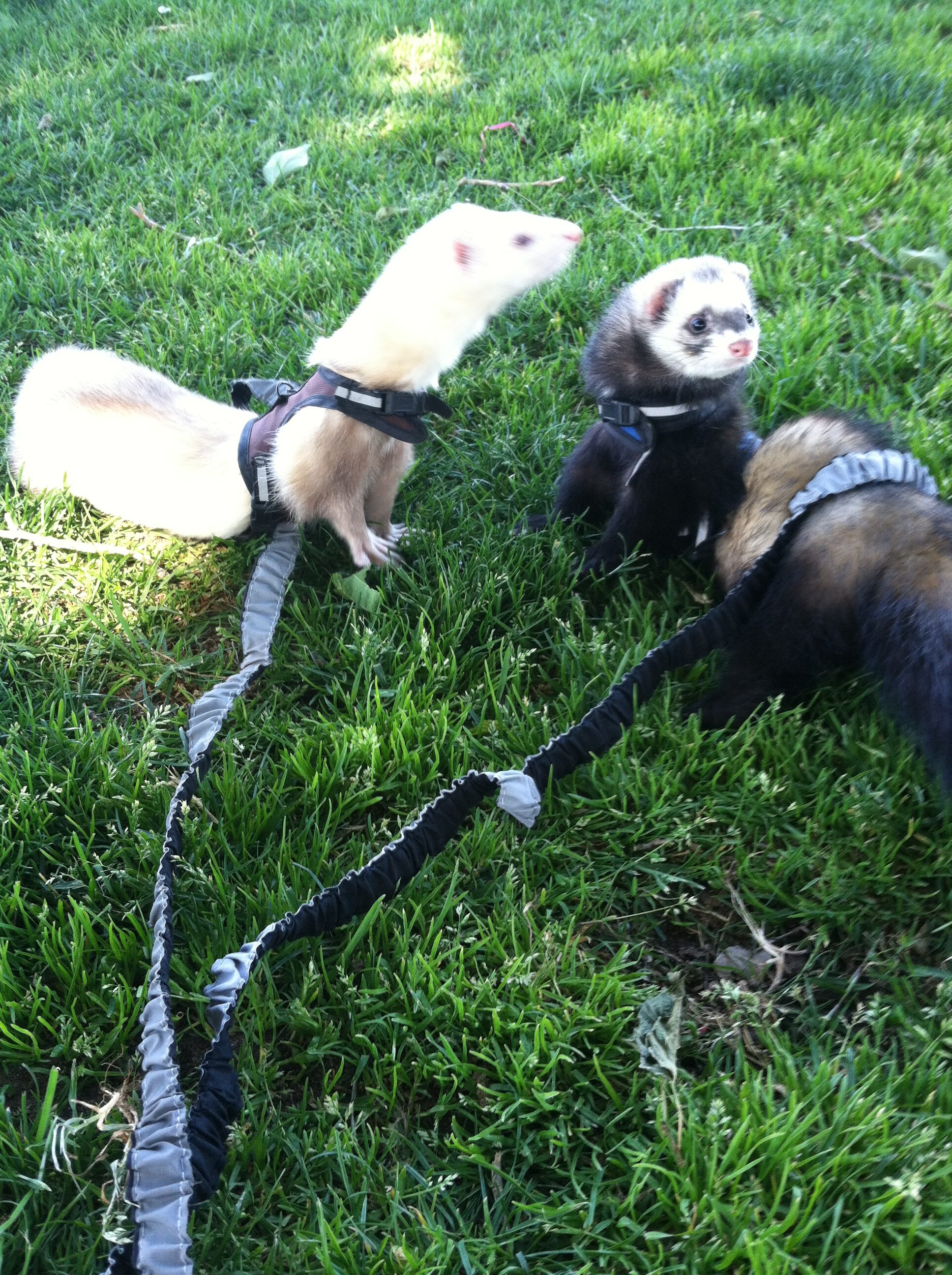
Ferrets are originally from Europe and are more inclined for colder weather. Living in Las Cruces, New Mexico is not ideal for a ferret and having good air conditioning is a must. However, problems do arise and the last two summers we have had our refrigerated air unit break down on us. Since we live in an apartment, we cannot do anything about this ourselves and we have to wait for the facilities to come and fix it. Sometimes that can take a few days, or even a week. The first summer that this happened I was not prepared and once again took to the internet to search for suggestions about how to keep my babies cool. Before I was able to look all of this up, I immediately put my ferrets in our closet, which they love exploring anyway, because our closets are always much cooler than the rest of the apartment. If it gets over 80 degrees ferrets can have a heat stroke and can even die. I took the top off their extra cage and filled the base with some cool (not cold!) water and let them explore it on their own, because my ferrets do not like to be forced into water. I also turned a storage tub on its side, placed a damp hand towel on the bottom of it, and placed it in a cool area. This is supposed to simulate a mud wallow and can help keep ferrets cool without them getting completely wet. I put a frozen bottle of water in a sock, and put it in their cage. I now keep two or three frozen water bottles on hand all the time, just in case. When experiencing a heat situation such as this, it is even more important to keep your ferrets hydrated. When they start getting over heated, they will eat less food, sleep more, and when they are awake they will stay very low to the ground. At this point I sometimes take that damp hand towel and wrap them in it for a bit to help cool them down. If your ferrets’ nose starts getting really dry, they begin vomiting, or they pass out seek veterinary attention immediately. I hope no one experiences this, which is why I cannot stress enough how important it is to be prepared and know your ferret, so you can see the signs of when they are in trouble.
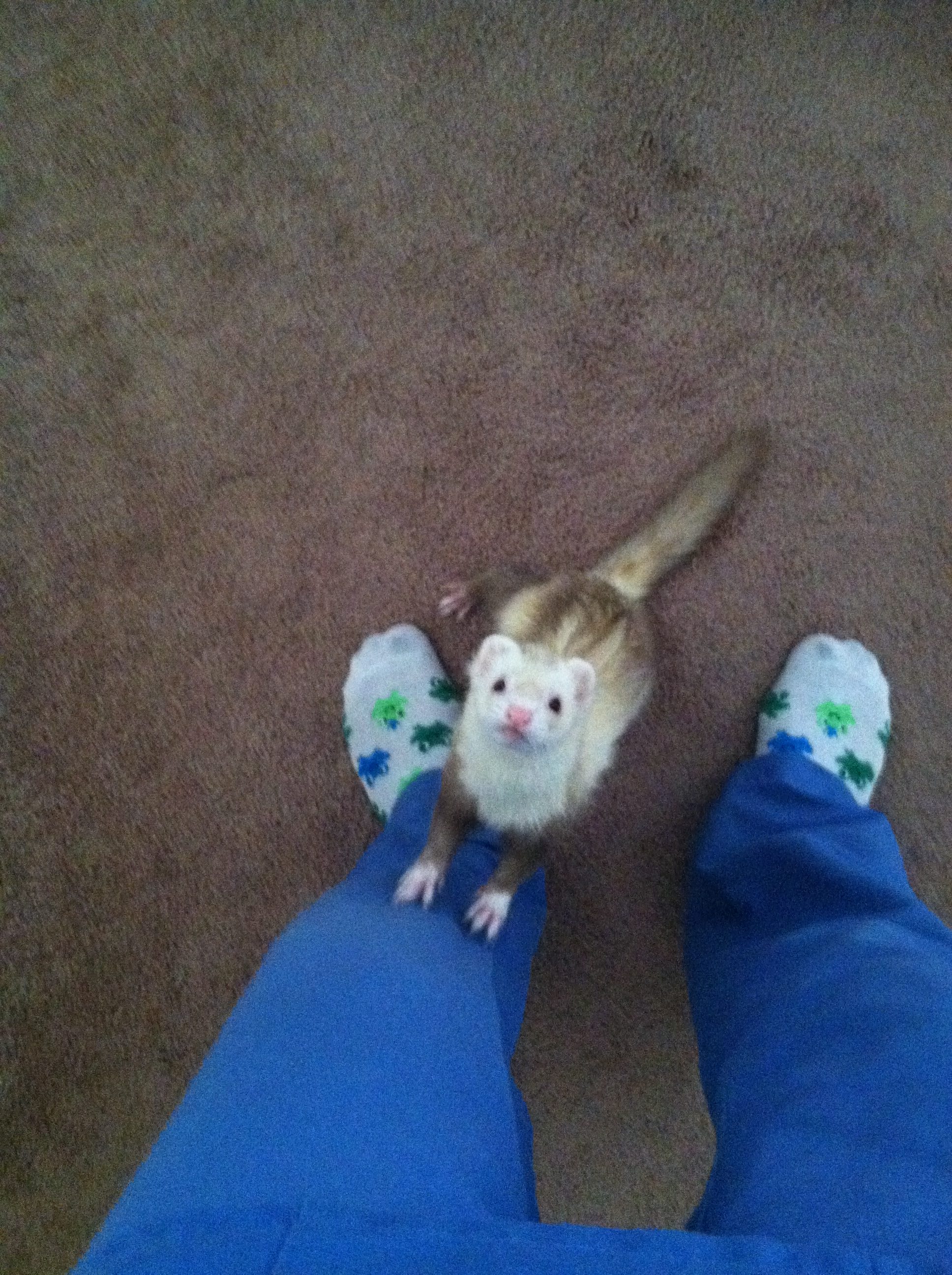
Final Words
I really enjoyed writing this article and I love educating people on ferret care. If anyone has any specific questions about ferrets or would like me to go more in depth and write another article on a particular subject please email me at nicolesanchez710@gmail.com.
Nicole Sanchez is a new addition to our staff of writers. Nicole has a bachelor’s degree in Animal Science and is currently work at Mountain View Regional Medical Center. She has always loved animals and has cared for dogs, fish, turtles, hermit crabs, goats and more throughout her life. Two years ago Nicole and her fiancé got their first ferret and from there were hooked. Nicole has spent a lot of time learning about ferrets and trying to educate people who believe the mostly false stereotypes about these wonderful, highly intelligent creatures.
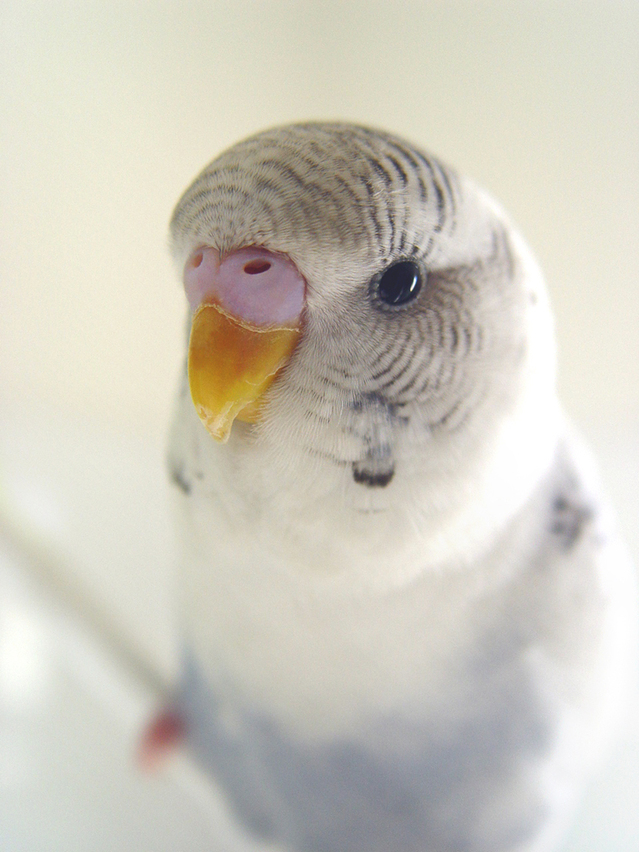
Budgie
Birds make great pets. With their beautiful colors, wacky personalities, and high intelligence it’s no wonder you’re thinking about bringing home a birdy of your very own! Most people assume that birds are cute and easy caged pets but in reality that’s not the case. Birds, just like any other pet, have a tendency to make a mess, a desire to explore, and will even throw tantrums! So, before you take that final step to bring home a feathered friend, here are some things you’ll need to know.
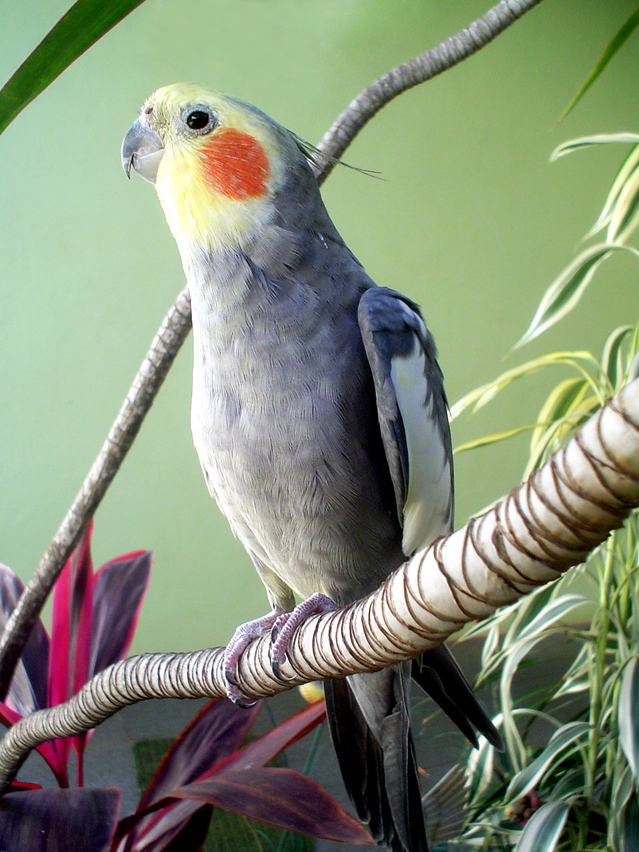
Cockatiel
Did you know that there are currently over 14.3 million pet birds in America? Ranging everywhere from Toucans to pigeons, each different species will have their own special needs that you as their owner will need to meet, so it’s important to research what kind of bird you want before heading down to the local pet store. The top ten most popular species for pet birds are: Cockatiels, African Greys, Conjures, Macaws, Cockatoos, Amazon Parrots, Poicephalus Parrots, Pionus Parrots, and Quaker Parrots. All of these little guys are extremely different from one another, anywhere from size, to loudness, to special needs, so make sure you choose a species that will fit well into your home lifestyle!
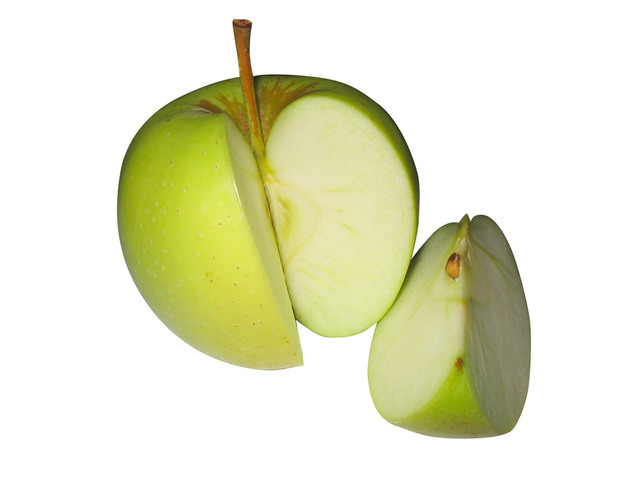
Feeding
Fortunately there are some traits that most bird species share. For example, birds aren’t necessarily caged animals like a hamster or mouse; they need at least two hours of human interaction outside of their cage! And you can’t feed a bird on a seed diet alone! To prevent intestine diseases it’s important to look into the diet of the bird you choose and make sure to compare lots of food brands before deciding on what to feed your bird! I personally feed my bird Zupreem Pellets, because they give him the nutrients he needs!
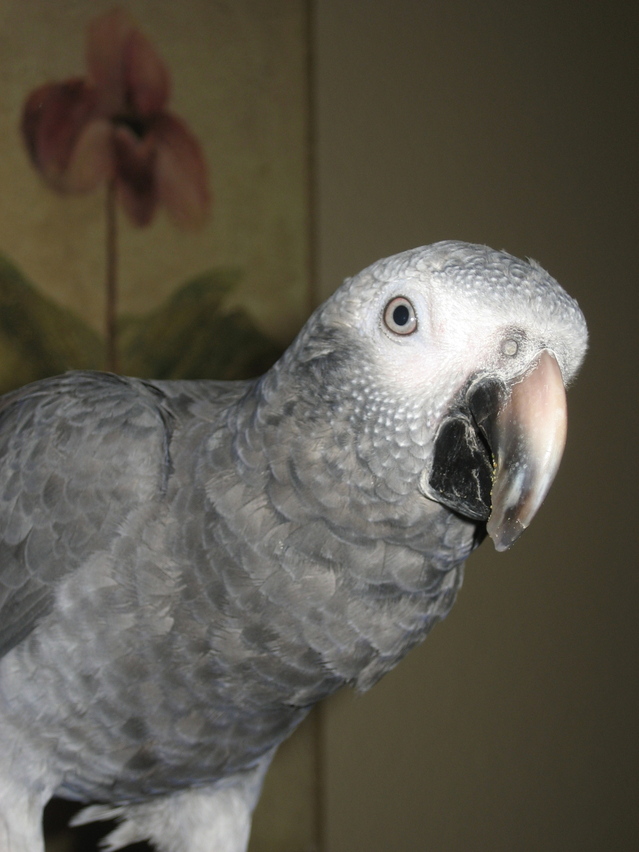
African Grey Parrot
Lifespan
In general, the larger a bird is, the longer its lifespan will be. Cockatoos will live from 50 to 70 years old, and Macaws and African Grays are known to live even past that so before buying make sure that you’re prepared to have your bird for the rest of your life and maybe even past that! This is especially important because birds bond with one human for life! It’s extremely difficult for a bird if you decide that you don’t want it.
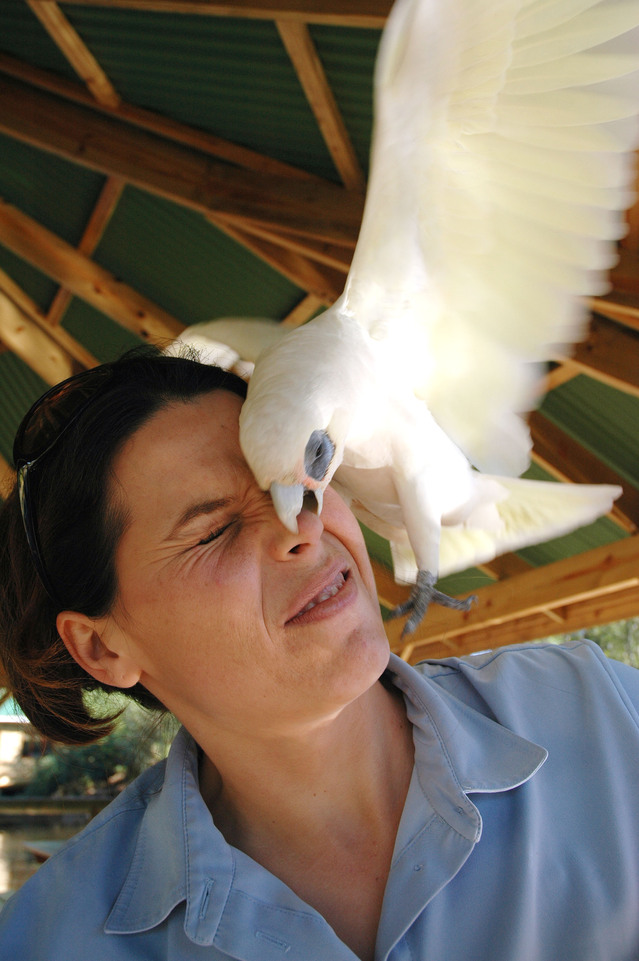
Behavior
Just like puppies, birds have a tendency to bite, and these bites can range from nibbling to being able to break skin. You can easily train your bird to not bite, but keep it in mind for when you first bring Tweety home. Lastly, remember that your emotion will affect your birds. If you’re upset they’ll be upset but when you’re happy you’ll both be happy!
Everyone knows that some birds, such as Parrots, can talk and mimic sounds, making them highly desirable pets. If you do end up with one of these birds remember that, just like a human child, it will take time for them to learn how to speak, starting with basic sounds and slowly becoming more advanced. However, even if not all birds can speak, all of them are definitely loud. Their screeching and yelling can go all hours of the day and night, so make sure you don’t mind a little noise and be sure to read up on how to train your bird to sleep through the night with tricks like the blanket method.
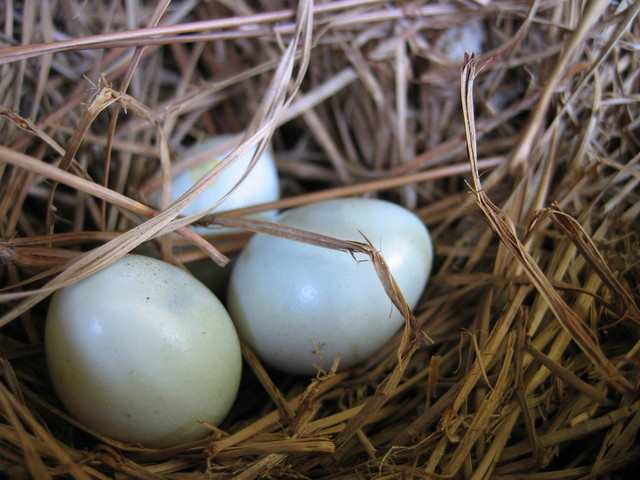
Where to Get Your First Bird
If you still want a little Woodstock of your own, the last thing you’ll need to think of is where to purchase them. First, keep in mind that you’ll most likely be purchasing your bird without knowing its gender, which, in order to determine, you must undergo a $50 dollar DNA blood test. The easiest option is to buy at a local pet store, but the smarter option is to buy from a breeder. Bird breeders commonly hand feed and hand raise the birds, making the bird much more friendly and sociable. They also tend to be less expensive than a pet store, with up to a $400 saving for your pocket. Or, like other animals, you can choose to open your home to a bird with a past, whose previous owner has either abandoned them or passed away.
Now that you know a bit more about what it takes to own a Polly of your own, I hope that you and your new family member fly happily into the sunset!
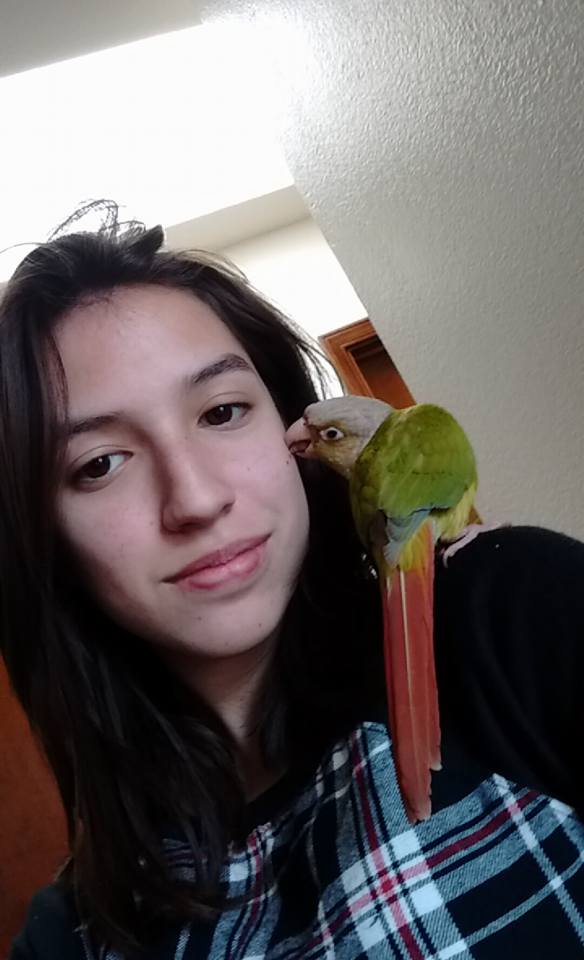
Lillianna Lopez, our Avian Editor, has been studying birds for four years and counting.
Ever since the age of three, Lillianna has been fascinated by animals. In her life she has had Horses, Dogs, Cats, Birds, Guinea Pigs, and the occasional Millipede. Lillianna is known (and often yelled at) for taking in injured birds to try and help them back to health. She adores all animals and always loves to help anyone in need. Lillianna is currently a member of 4-H and participation in the dog project, and bird project.
Every year at this time, my class (along with undoubtedly thousands of other classrooms in the US) purchases a cup of caterpillars to raise and release. We do this to show the children the process of metamorphosis, but did you know that you don’t have to rely on a teacher to raise your own butterflies?
There are two ways that you can participate in this wondrous part of the natural world. First, you could buy a kit like I did or you could find your own caterpillars and raise them. Taking care of caterpillars and butterflies isn’t really that hard and releasing them into your garden is a rewarding feeling. This is especially true when you see a butterfly of the same species later and wonder, “Is that one of mine?”
I want to say here that I don’t typically agree with taking a wild animal and bringing it into the home unless it is absolutely necessary. In my opinion, forcing wild animals to become tame in any way should be discouraged since they need their natural instincts to survive and our interactions with them remove some of that instinct. It is a slightly different story with insects, however, because they are easily kept without much handling and you are increasing their numbers when you release them into the wild. If you have found a caterpillar or eggs on a plant from the garden, it is better to raise them and release them than spray the plants with pesticides that will kill them before they have a chance to mature. By taking them away from your garden and feeding them from the species specific plants that you purchased, you are saving the butterflies and saving your garden. In my case, I would rather save the caterpillar than have it be squashed by an eager child’s fingers in their excitement to pick it up and show it to me. Why not save that one caterpillar and help it on its way once it grows up?
Butterfly Supplies
Before you rush out to raise butterflies, you need to give some serious thought to how you are going to contain them. The old insect in a jar image comes to mind, but this is highly inappropriate, uncomfortable, and unhealthy for any creature you catch, especially butterflies. A caterpillar may not need too much room, but when it matures, it will have a wingspan that requires more space than your jar can provide.
Most classrooms and science museums get their butterfly supplies from Insect Lore. This is a wonderful site that offers all types of educational tools as well as live insects to raise and release. They have kits available for Painted Lady butterflies, ladybugs, ants, and praying mantes. (Yes, that’s the plural for praying mantis, and if you have never watched them hatch out of their case, it is really something to see!) I have both their “butterfly garden” and “butterfly pavilion” pop up nets and I must say that I prefer the pavilion when it comes to the health of the butterflies and also for the purposes of viewing. The “garden” is a small size, about a foot tall and doesn’t give your butterflies much room to fly around, especially if you intend to reuse this with other, larger types of butterflies found around your home. The “pavilion” is about two feet tall and allows room for you to decorate their habitat in a more natural way while leaving them plenty of space to fly. I also find that most people enjoy butterflies more when they are in a larger habitat. Both of these have a handle that allows for hanging from the ceiling or other location, but if you put a potted plant inside, please do NOT hang your habitat! The habitat is not stable or sturdy enough to hang with any weighted object inside and this could also harm your butterflies if the plant falls over.
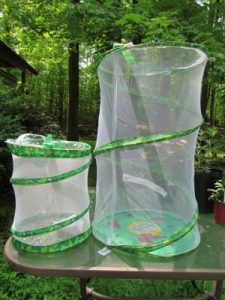
Butterfly habitats from Insect Lore, The “butterfly garden” is on the left and the “butterfly pavilion” is on the right.
You don’t have to buy from Insect Lore, however. The Educational Science online nature store has a wide variety of habitats to choose from, including an abundance of live kits, outdoor tents, specialty equipment, and host plants. This was a site I discovered while searching for caterpillar rearing supplies and though I have not yet placed an order, I fully intend to. Their variety has simply made my heart sing, especially since they offer a range of larger tents and enclosures for raising happier, healthier butterflies. For someone who intends to raise local caterpillars, this is an important factor, because a butterfly requires at LEAST twice the space of their wingspan when they emerge from their cocoon. That measurement is three dimensional, in every direction. If you find a Luna moth, you are looking at a nearly five inch wing span, so you will need ten inches all around. Once your moth or butterfly starts to fly, they are certainly happier with more room to do it in. You might want to consider something even larger than that if you are going to keep them for any length of time before you release them. Whatever habitat you choose, once it is in your possession you can begin your quest for caterpillars.
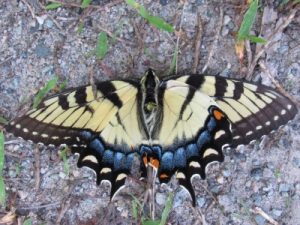
This female Swallowtail Butterfly was hit by a car in the parking lot of Eno River State Park in North Carolina and did not survive.
Caterpillars By Mail
One of the two ways to raise butterflies is to get a kit by mail. Both Insect Lore and the Educational Science store offer live kits, where caterpillars are shipped to you. Insect Lore guarantees that three out of five butterflies will grow to maturity, while Educational Science guarantees only that the caterpillars shipped to you will be alive when they get there. In nature not every butterfly survives to maturity and there is not really any way to avoid this in captivity either. It is just how the world works. I will say that in all of my years of raising butterflies, I have only had to report one unsuccessful maturing of butterflies to Insect Lore and have never lost a “wild” caterpillar that my children found. Butterfly rearing may be simple enough, but it is precise, and if you do it by the book, you should have very good results.
Be aware, you may also have a mature butterfly emerge with an unusual deformity. My class once raised a Painted Lady whose wings came in backward on the right side. The top wing was where the bottom wing should have been, and vice versa. We named this butterfly Wilbur and kept it for its entire life span because it could not fly and releasing it into the wild would have been sending it to a cruel life where it could not get to any food or protect itself. Keeping Wilbur was an amazing opportunity for the children to interact with a butterfly up close without worry of it getting away. “He” wandered our classroom, walking around from surface to surface, “shared” our lunches and was basically the puppy of butterflies; so, not all mishaps with shipped larvae are tragic experiences.
When you place an order for caterpillars from any store, check the delivery date CAREFULLY. Someone MUST be in the delivery location to receive the caterpillars in order to place them indoors, in climate controlled conditions. Caterpillars are typically shipped in plastic cups or containers, which are put in a shipping box and mailed to you. Imagine being put in a hamster ball, then dropped into a cardboard box, and finally left in a metal or plastic mailbox while the hot sun beats down on you. This is what your caterpillars will endure if they are left alone on shipping. I can’t emphasize enough how important it is to arrange delivery at a time when you can care for them right away.
Please note: My current experience of raising butterflies by mail is only with Insect Lore, so from this point onward my description of shipped larvae rearing is based solely on that knowledge.
Once you have your caterpillars, set the cup in a safe location, away from air vents and direct sunlight. Your caterpillars should come with care instructions that I highly recommend you follow if you are a novice. There are those who order cups and remove the caterpillars into a habitat that provides fresh food rather than the processed food that comes in the cup with them. I however, do not recommend this unless you have expert experience in handling butterflies. There are parasites and other issues to worry about when raising caterpillars and the cup that they are in is a secure environment that protects them from that without any hassle to you, their caregiver. Once they have all made their cocoons, you may open the lid and transfer them to your butterfly habitat in the way described in your kit’s instructions.
When I place my cocoons from the cup into the habitat, I generally do not include the butterfly’s host plant, but leave the structure open and free of anything that could harm the butterflies while they are emerging. It is only once all of the butterflies have emerged and their wings are dry and ready to use that I introduce the host plant and a food source to their environment. If you have one butterfly that emerges well before the others and you are worried that they will be waiting a long time for food, you can introduce it, but keep a careful eye that the emerging butterflies do not become stuck or trapped in the food source while their wings are drying.
NEVER touch a butterfly when it is emerging from the cocoon or for three hours afterward. Remove the empty cocoons only when the last butterfly has had two or three hours to dry its wings. Once all of your butterflies have emerged, you can release them, or introduce a host plant in hopes that they will breed. More on that later.
Caterpillars From Home
The most important thing about raising a caterpillar that you found somewhere around your home is identifying what type of caterpillar you have and providing it with the proper food. If you find an egg on a leaf, it is a fairly safe bet that the mother butterfly laid it there because this is the host plant and you already have the proper diet displayed for you. Now, simply grab more leaves from whatever plant you found the egg on and place them in your habitat. (Or get one of the special bags or nets to put over the plant that will contain the caterpillars, but allow the plant to grow.) If you find a live caterpillar, always identify it and research what types of food it needs. That caterpillar could be traveling from one plant to another and the leaf or branch it is on does not necessarily represent the type of food it eats.
When it comes to identifying anything for our classroom, I use the website Discover Life. I prefer this site, because it uses images and selective sorting to help narrow down your search. Just click the “ID Nature Guides” link at the top, find the creature or plant that you are searching for, and you are on your way to identification. For caterpillars, you can select main body color, main body pattern, hair density, and distinct features. Sometimes your caterpillar is hard to find, but don’t give up the search. If you reach a point where you simply can’t identify what you have, ask a specialist or go out to where you found the caterpillar and grab one of every leaf and blade of grass that you can find, then place them all in the habitat as an offering. Take note of what the caterpillar eats and provide more of that food, removing the rest.
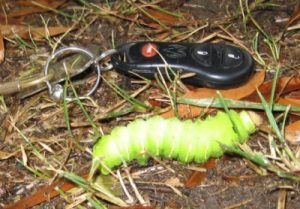
A Luna moth caterpillar, identified using the Discover Life website and the Butterflies and Moths of North America site: Butterflies and moths
You need to research your caterpillar carefully. Not only do you have to give it the right kind of food, but you also need to understand how it will create its chrysalis. We are all familiar with butterflies who hang upside down and scrunch their bodies into tight, hard cases. However, some caterpillars will instead glue a leaf around themselves which acts as a cocoon. If you assume which type of caterpillar you have incorrectly, you may check on it one day to discover that it has made the best of a bad situation and wrapped itself in whatever it can find, which usually means it will not survive. If you choose to take a caterpillar from the wild, always research it thoroughly, not only in the larvae stage, but in the butterfly stage as well. You need to be certain that you are providing it with the proper materials for metamorphosis, but also the right diet and living space throughout its entire life span. If you want to make it more comfortable in its habitat, you can also research the butterfly’s host plant and provide that as a comfort object, which will reduce the stress your butterfly feels being completely exposed in an empty net. The host plant will also help you, if you decide to try and breed your butterflies.
What to Feed Them
It is fairly easy to feed your butterflies, no matter where they come from or what type they are. You may start by:
Time For Babies
Once you know the host plant of your butterfly, you can add that to the habitat when they have emerged and their wings are dry, but the biggest part of breeding is obviously having at least one male and one female. Some butterflies (like the Easter Tiger Swallowtail) are easy to identify, but others (such as the Painted Lady) aren’t as simple. The only way to know what you have is to research them. Find pictures, compare, ask an expert, or just keep your butterflies together for a day or two and see how they react to each other. If you find two butterflies back to back, seeming to be glued together at the tail end, you have a male and a female.
Most butterflies don’t take too long to mate and lay eggs, so within a day or two they should pair off and within another day or two they should start looking for a place to lay their eggs. Again, I have only witnessed this process with Painted Lady butterflies, so I am now describing their behavior.
When a female is ready to lay her eggs, she wanders around a leaf, seeming to frantically rub it with her front legs. This is how she “tastes” the leaf to be certain it is the right kind for her children to eat. Once you start to see this shift in behavior, pay close attention to where she is in your habitat and take note of where she is putting the eggs, so that you can keep an eye on them.
Keep in mind, breeding butterflies is NOT easy. First of all, butterflies do not inbreed well, so the chances of the eggs maturing and providing you with happy, healthy caterpillars are smaller if you have gotten your original batch from the same source. This could be an online catalog or from the same location in your neighborhood. Secondly, there are parasites that can harm your caterpillars, which is why customers are asked not to open containers of caterpillars to re-home them on their arrival. Finally, it can just be too darn hard to contain them. I have only managed to breed our Painted Ladies three times in the many years that I have been ordering them. Once, we had so many eggs that hatched we were looking at housing an uncountable number of caterpillars… until they all escaped their enclosure. I have never successfully raised one to full size, however that doesn’t stop me from letting them lay an egg or two for the children to see before I let the butterflies go to find more suitable arrangements for their future offspring. There are habitats that you can purchase that are more suitable for raising freshly hatched caterpillars and I would highly recommend talking to an expert if you decide you would like to give your little ones the best chance for survival in captivity.
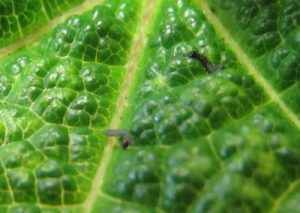
Painted Lady caterpillars one day after hatching. These are barely the size of a dot made by a ballpoint pen.
Raising butterflies is a rewarding and wonderful experience for young and old alike. With the age of the internet, it is easier than ever to provide a suitable habitat to ensure that the species you find will be as happy and healthy as possible while you watch them grow, mature, and change. If you handle your butterflies as little as possible and always use host plants that have not been treated with pesticides, you are giving your new friends a great start. Watching the metamorphosis of these beautiful creatures is both exciting and rewarding and I wish you success in your new adventures together.
 Mirrani Houpe, our Small Animal Editor, has had rats since she took home her first little boy once they both completed the second grade. Since that time she has owned, rescued and bred many kinds of rats, from many backgrounds. She may not be a vet, psychology major, or scientist, but her babies have her very well trained when it comes to how to care for them. She is constantly working with her family’s veterinarian to come up with new and innovative ways to love and care for the most often misunderstood rodent in the pet world. You can e-mail her at mirrani@yourpetspace.info
Mirrani Houpe, our Small Animal Editor, has had rats since she took home her first little boy once they both completed the second grade. Since that time she has owned, rescued and bred many kinds of rats, from many backgrounds. She may not be a vet, psychology major, or scientist, but her babies have her very well trained when it comes to how to care for them. She is constantly working with her family’s veterinarian to come up with new and innovative ways to love and care for the most often misunderstood rodent in the pet world. You can e-mail her at mirrani@yourpetspace.info

Someone once told me that opinions are like noses: everyone has one, they’re all different and no one is better than another. I’ve found that mostly to be true. In the world of pets, also, we know that each one is unique, even if certain things about their breed or training or age are similar. It’s tempting, then, to think that once we draw a few conclusions about a pet we have the whole picture–when that can actually be pretty far from the truth. Dave and I see changes in the pets we serve on a daily basis: new things we never realized about who they are, how they react to other pets and us. Essentially, one can never know all there is to know–because pets, like people, change and grow.
In the same way, we have seen that sometimes clients think they know all we have to offer–but they are surprised when we mention one thing or another we do. So I thought I’d take the opportunity here to write about:
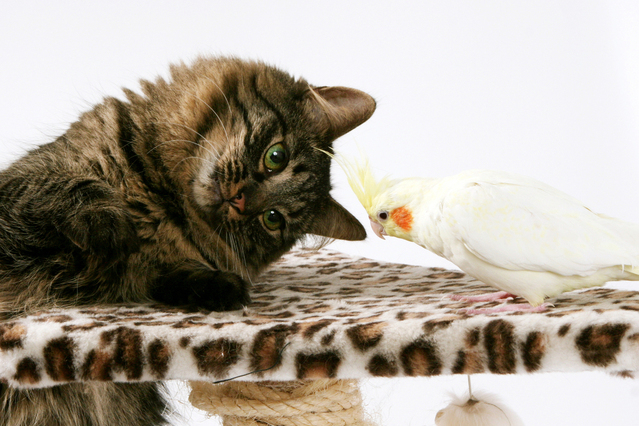
We care for all types of pets in the home. That includes:
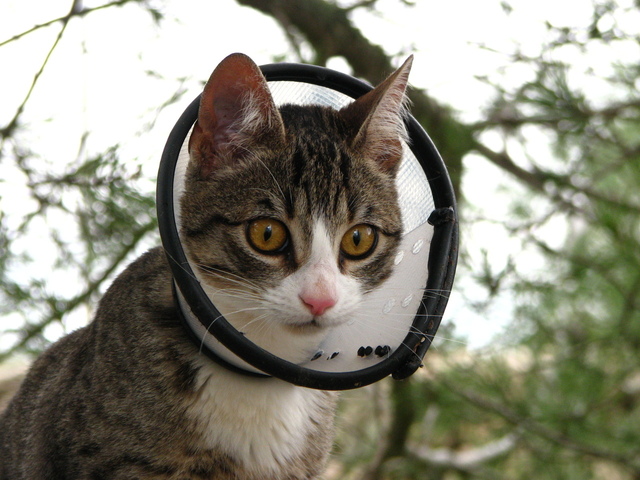
We care for pets in their homes that are:

We provide transport.
Dave and I actually live on the opposite side of Las Cruces from our facility, so we’re back and forth from east to west a couple of times each day. So it’s very easy for us to transport your pet to/from:
Often, our fee is only whatever the distance is off our usual route, not even the entire way!

Also, just some of our unique features are:
Would you like to know more about how our employees are trained and certified? Stop by YPS and let us show you the difference certification makes in the care of your pet!
Get to know us better–you’ll be surprised what you find.

Joy Jones, Publisher, is also the Vice President of Your Pet Space, a cage free dog boarding facility serving the greater Las Cruces, NM area. She is also a syndicated columnist whose book Indigo was recently published. When not working at Your Pet Space, she writes a metaphysical column, as well as humor. You can e-mail her at joy@yourpetspace.info as well as follow Your Pet Space on Facebook.